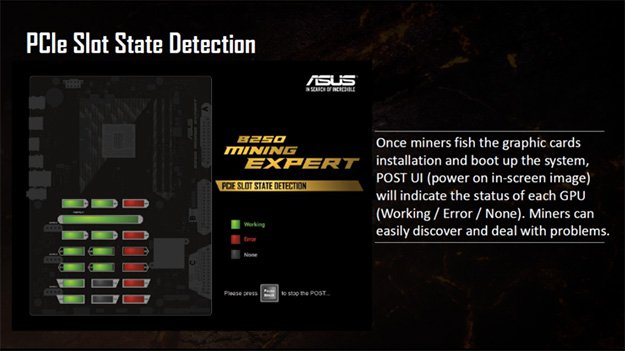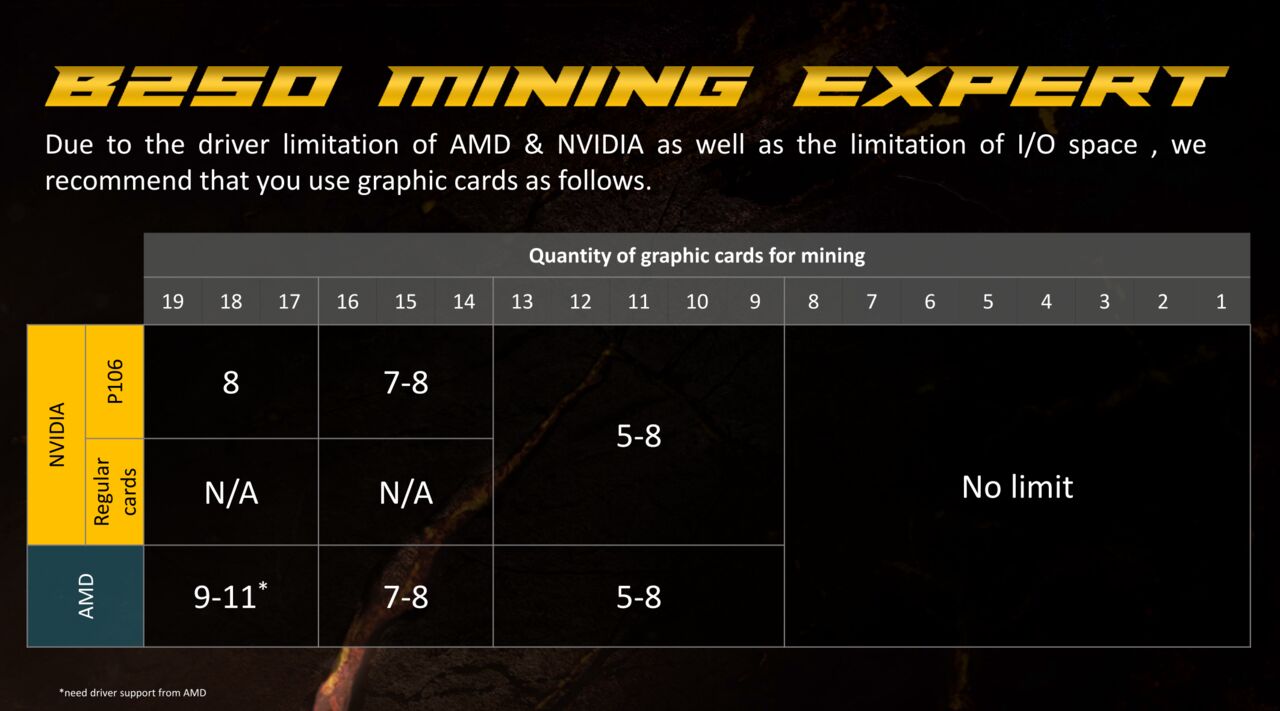This is something you don’t see everyday. I’m not that into the whole cryptocurrency thing but I saw this mentioned and looked into it. Turns out that it is (as far as I can tell) a real thing, even though it looks like something that would be announced as an April Fool’s joke.
Asus has just announced the B250 Mining Expert motherboard, a very peculiar motherboard aimed at the cryptocurrency mining market. What’s different about the motherboard? Take a gander…

The board sports 3 24-pin ATX power connectors, 3 Molex auxiliary power connectors and 19 PCI Express slots - 1 x16 slot and 18 x1 slots.
The B250-based LGA1151 board will reportedly have the slots split into three groups, each of which will have its own dedicated 24-pin ATX connector and Molex auxiliary connector. The POST UI (the screen shown at boot) will have a utility that shows the different PCIe connectors and their status - Green means a card is detected properly, red means there is an error and black means that no card is installed. The BIOS will also be tailored for the application this board is intended for - that is, mining.

Everything else about the board seems pretty sparse, it only has two RAM slots and a modest amount of I/O, but it doesn’t look unreasonable - you even get an Intel NIC, which is nice.
Pricing and availability have yet to be announced. As I said, I’m not a crypto miner at all, but this kind of board definitely scratches an itch in the back of my head. Depending on the price I kinda want to get one as a curiosity item. One thing I can see some crazy person doing is getting one of these and cramming a load of dirt-cheap Intel PRO/1000 ethernet NICs onto it with risers, in some kind of unholy abomination of a case with 19 brackets and using it as a router.
Let me know what you think of this. Even ignoring the doomed-to-die mining market, I do think that this could have some valid (albeit unusual) use cases elsewhere. I think it’s at least interesting. I’ll be waiting to see how those PCIe lanes are assigned, because it would kinda be a shame to have all of them go through the DMI…
At first this seemed kinda like rumor mill stuff because details about the board are limited and so far the most well known sources for this are wccftech and hothardware.com… yeah, I wasn’t enthusiastic about it either, but the sources seeeeeem to check out. If I’ve somehow got this wrong, let me know.





